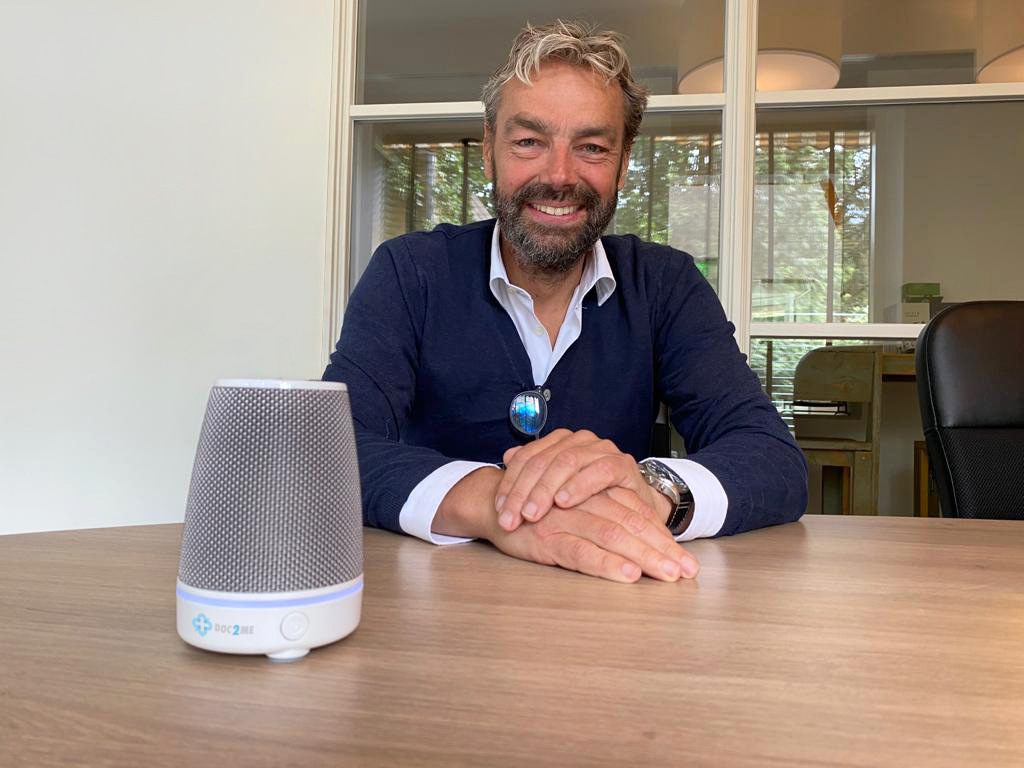"Call recording in HiX with a level playing field for doctor and patient"
About 60% of patients forget essential information from the conversation with their doctor as soon as they leave the doctor's office. By integrating Doc2Me with HiX, doctors and patients can record the consultation or parts of it. This way they can both relisten to the conversation - the patient with family members if they wish to.
Doc2Me fits in seamlessly with ChipSoft's vision to optimally support caregivers with solutions that reduce registration tasks and give patients more control over their care process. In practice, this is how it works: the doctor opens the file of the patient in question in HiX. When the doctor and the patient start using Doc2Me in the consultation, only the patient's file is accessible. The moment the button is pressed again, the recording is safely stored in the correct file. The device itself does not store any data. The doctor and the patient can both listen to the conversation streaming afterwards; the doctor directly in HiX and the patient via the portal.
Four eyes and ears
During difficult conversations, patients are often not able to focus and end up barely retaining any information. In addition to the uncertainty this creates for the patient, it leads to many callback requests for doctors. Patrick van der Schaaf, the creator of Doc2Me, said this happened in his immediate environment. "A friend of mine had long conversations with doctors. Her husband always went with her, and recorded parts of the conversation and took notes. This way they had four eyes and ears to understand what the doctors said."
A solution for both parties
Around the same time, Van der Schaaf saw a social media post by a doctor. "He had stuck a note on his door that read 'Recording your conversation with me is fine, but please let me know beforehand.' The added value for the patient combined with the request of the doctor helped me come up with a fitting solution for both parties.
Accelerating development
When Van der Schaaf himself faced a complex care process, he decided to accelerate the development of Doc2Me. "I noticed that I just could not remember information - for example, when medication was adjusted from 4 pills twice a day to 2 pills three times a day... When the doctor tells you something, you nod in agreement, but once you get home, you have forgotten it. That bolstered my conviction that Doc2Me should quickly be made available."
Doc2Me: neutral between doctor and patient
Many patients record the conversation with the doctor on their own device. Doctors usually see this as being less safe, says Van der Schaaf: "With a one-sided recording, the conversation literally and figuratively walks out the door with the patient, while the doctor only has his notes to fall back on. Doc2Me occupies a neutral position between doctor and patient, and can be used by both at the press of a button. This means there is a level playing field; the doctor and patient are both in the driver's seat, and the conversation is safely stored afterwards and available to both.
Making decisions together
By offering Doc2Me as a service, healthcare providers have more control over the situation. Van der Schaaf: "The patient's question - can I record this conversation? - is no longer necessary. Doctors can now decide, in consultation with the patient, to only include certain parts of the conversation, for example when it comes to practical matters or medication. They decide together what should be recorded. This is in line with 'good conversations', which the Netherlands Patient Federation and Dutch Ministry of Health, Welfare and Sport (VWS) stimulate, and which ChipSoft supports with HiX."
Enthusiastic doctors
Van der Schaaf is currently in discussion with several hospitals who would like to use Doc2Me. "Oncologists and haematologists in particular are very enthusiastic. They often have hard conversations where much of the message is lost, so that a subsequent consultation often starts again from the beginning. But I also talk to orthopaedic surgeons who explain complex back operations to their patients. After this kind of conversation, the patient goes home and gets asked about what the doctor said. It is difficult for them to retell it. Through Doc2Me they can relisten to the conversation with their loved ones."
Doc2Me for general practitioners
After the general roll-out of Doc2Me in hospitals, Van der Schaaf also wants to offer this the new recording tool to GPs. "In primary healthcare, the knife also cuts both ways. GPs have many in-depth conversations about patients' concerns. By recording the conversation and listening to it at a later moment, patients visit their GP less often, which gives the doctors more time and space for other care."
Reduced registration tasks
Doc2Me still focuses on recording audio, but Van der Schaaf is working behind the scenes on a solution for writing out the conversations, so that the registration tasks doctors have to carry out are reduced. Doc2me and ChipSoft are compatible in this area, as well: the ICT solutions from both parties complement each other and support both the doctor and the patient, allowing them both to completely focus on the patient's healing.
Mobility
Mobility also plays a role. Van der Schaaf: "The next step is to have a mobile version and a bedside version of Doc2Me, because many conversations take place at bedsides and elsewhere, inside and outside the healthcare institution. The end goal is that Doc2Me will be so intelligent that certain information can already be registered based on key words in HiX. But that is still a pipe dream. First, we give the patient and the doctor an extra pair of ears."

Patrick van der Schaaf, with the consult recording device Doc2Me infront of him.







